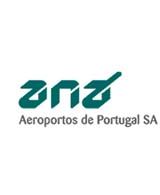PAGE CONTENTS
Objectives
The objective of the GAMMA project is to develop and demonstrate a pre-operational A-SMGCS which will provide surveillance and conflict detection services to controllers and vehicle drivers at airports. The GAMMA services will use EGNOS (and GALILIEO in the future) as enabling technology for mobiles localization with an adequate level of accuracy and integrity.
Click here for larger image
GAMMA only addresses the A-SMGCS (Advanced Surface Movement Guidance and Control System) functions which are closed to operational exploitation and should provide more benefits by using GNSS: guidance, surveillance, control.
The Guidance Service displays the position of the vehicle on an airport map to the driver. This will reduce navigation errors which occur especially in conditions of reduced visibility.
The Surveillance Service displays the position and the identity of all mobiles moving at the airport to both the driver and the controller. It provides the awareness of all the ground traffic, allowing detection of any dangerous mobile which (s)he could not see visually.
The Control Service provides assistance to both the controllers and vehicle drivers by generating automatic alerts. An alert situation is, for example, a vehicle moving on the runway when an aircraft is taking-off or landing.
The approach contained in the GAMMA project is to consider that future A-SMGCS systems will be based on cooperative mobiles. This implies that all surface vehicles have to be equipped with a dedicated ‘GNSS receiver’.
Challenges
The A-SMGCS services are very critical in terms of performance. One of the main performance issues to be considered is the accuracy of the mobiles position. The position must be accurate enough in order to correctly detect the alert situations.
Use of EGNOS is of key importance to meet the accuracy and integrity requirements for vehicle location.
The 2 demonstrations have shown that EGNOS was able to provide the required accuracy for vehicle location. The accuracy was measured through the Horizontal Protection Level which is an upper boundary of the error on the position. Requirements on HPL values are the following ones:
- Less than 7.5 meters for collision and infringement detection purposes,
- And less than 12 meters for surveillance and guidance purposes.
Plan
The GAMMA project will be performed in two phases. Phase 1 will last about 5 months and Phase 2 about 16 months. Phase 1 has set the requirements and Phase 2 was focused on systems development and evaluation.
Phase 1 was composed of 3 tasks. The Requirements Assessment was a prerequisite for the Definition of GAMMA Demonstration System. Phase 1 ended with the planning of the field demonstrations.
The Phase 2 tasks have been sequenced in the following way:
- Detailed Design,
- Development,
- Field Demonstrations,
- Critical Assessment,
- Final documentation.
Field demonstrations were conducted:
- In Toulouse Blagnac Aiport (France) from September 2004 to December 2004,
- In Fransisco Sa Carneiro Porto Airport (Portugal) from February 2005 to June 2005.
Following Porto demonstration, and taking into account the great amount of data and of experience that it provided, ANA, Porto Airport operation managers and M3 Systems have decided to continue the experimentation till December 2005.
Current Status
Final presentation took place in ESA premises on September 13th 2005.
Porto demonstration has been extended in order to collect additional data on EGNOS signal and to start to work on a proposal for operational procedures update.






